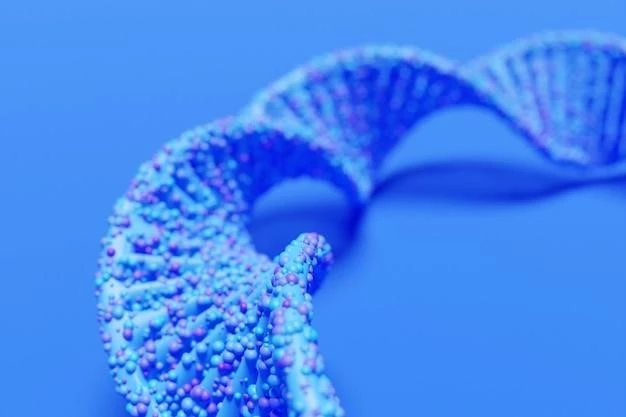Introduction
Synovitis granulomatous uveitis cranial neuropathi is a rare condition characterized by joint inflammation, eye inflammation, and cranial nerve damage. It tends to manifest in childhood.
Overview of Synovitis Granulomatous Uveitis Cranial Neuropathi
Synovitis granulomatous uveitis cranial neuropathi, also known as Blau Syndrome, is a rare genetic disorder characterized by joint inflammation, eye inflammation, and damage to cranial nerves. It typically presents in childhood and is linked to a mutation in the NOD2 gene.
Patients with this condition often experience symmetrical synovitis in the hands and wrists, recurrent uveitis, and cranial neuropathies. Blau Syndrome is a unique entity characterized by a triad of granulomatous dermatitis, uveitis, and arthritis. The syndrome can have a familial incidence and may pose diagnostic challenges due to its rarity and distinctive features.
Clinical Features
Synovitis granulomatous uveitis cranial neuropathi presents with joint inflammation, eye inflammation, and cranial nerve damage. It commonly appears symmetrically in the hands and wrists, with recurrent uveitis and distinct cranial neuropathies.
Symptoms and Onset
Synovitis granulomatous uveitis cranial neuropathi commonly manifests with symmetric joint inflammation in the hands and wrists, recurrent episodes of eye inflammation (uveitis), and distinct cranial neuropathies. The disease typically presents in childhood, with affected individuals experiencing boggy polysynovitis in the hands and wrists, recurring uveitis, and cranial nerve damage. The onset of symptoms may include granulomatous dermatitis, arthritis, and uveitis at an early age, often before four years old.
Distinctive Characteristics
Synovitis granulomatous uveitis cranial neuropathi, also known as Blau Syndrome, is characterized by a unique triad of granulomatous dermatitis, uveitis, and arthritis. This rare genetic disorder typically presents in childhood and may involve symmetric polysynovitis in the hands and wrists. The condition is associated with a mutation in the NOD2 gene and can manifest with joint inflammation, eye inflammation, and cranial nerve damage. Familial incidence and diagnostic challenges are notable features of this syndrome.

Diagnosis and Genetic Links
Research suggests familial cases of granulomatous synovitis, uveitis, and cranial neuropathies with an autosomal dominant inheritance pattern. A mutation in the NOD2 gene is linked to conditions like Blau Syndrome, presenting with joint inflammation, uveitis, and dermatitis.
Mode of Inheritance
Studies suggest an autosomal dominant inheritance pattern for familial cases of synovitis, uveitis, and cranial neuropathies. The condition is associated with a mutation in the NOD2 gene, contributing to the manifestation of symptoms like joint inflammation, recurrent uveitis, and cranial nerve damage.
Genetic Mutations
The condition known as Blau Syndrome, or familial synovitis granulomatous uveitis cranial neuropathies, is associated with mutations in the NOD2 gene. This genetic anomaly leads to joint inflammation, uveitis, and cranial nerve damage. The disease onset is commonly in childhood, with manifestations such as granulomatous arthritis, recurrent uveitis, and dermatitis.
Treatment and Management
For Blau Syndrome, treatment typically involves managing symptoms with anti-inflammatory medications to reduce joint inflammation and uveitis flare-ups. Regular monitoring and early intervention can help prevent potential complications.
Current Approaches
Management of Blau Syndrome involves the use of anti-inflammatory medications to control joint inflammation and uveitis symptoms. Regular monitoring is crucial to address any potential complications. Research focuses on understanding the genetic mutations associated with the condition and exploring targeted therapeutic interventions to improve patient outcomes.
Potential Therapeutic Developments
Researchers are exploring targeted therapeutic interventions for Blau Syndrome, focusing on understanding the genetic mutations, such as those in the NOD2 gene, that contribute to joint inflammation, uveitis, and cranial nerve damage. These developments aim to improve treatment outcomes and quality of life for individuals affected by this rare condition.
Association with Blau Syndrome
The topic ″Synovitis Granulomatous with Uveitis and Cranial Neuropathies″ is closely related to the medical condition named Blau Syndrome. Blau Syndrome is a rare genetic disorder affecting children with symptoms like joint inflammation, uveitis, and dermatitis.
Similarities and Differences
Synovitis granulomatous uveitis cranial neuropathi, known as Blau Syndrome, shares similarities with familial cases characterized by joint inflammation, uveitis, and cranial neuropathies. Both conditions exhibit a distinct triad of symptoms and are associated with genetic mutations, particularly in the NOD2 gene. However, Blau Syndrome presents as an autosomal dominant inflammatory disorder affecting the skin, eyes, and joints, typically manifesting in childhood with symptoms like granulomatous arthritis, uveitis, and dermatitis.
Diagnostic Challenges
The diagnosis of synovitis granulomatous uveitis cranial neuropathi, also known as Blau Syndrome, can be challenging due to its rarity and unique clinical presentation. The condition’s overlap with other disorders and the need for genetic testing to confirm mutations in the NOD2 gene add complexity to the diagnostic process. Additionally, distinguishing these symptoms from those of other inflammatory conditions poses challenges in accurately identifying and managing this genetic disorder.
Epidemiology
Blau Syndrome, or synovitis granulomatous uveitis cranial neuropathi, is a rare disorder typically affecting children with symptoms like joint inflammation, uveitis, and cranial neuropathies. The condition is linked to genetic mutations in the NOD2 gene and manifests in childhood. While it is a rare condition, familial cases have been reported, highlighting the need for further research and understanding of this syndrome.
Prevalence Worldwide
Synovitis granulomatous uveitis cranial neuropathi, or Blau Syndrome, is a rare disorder primarily impacting children with symptoms like joint inflammation, uveitis, and cranial nerve involvement. While the condition is infrequent, familial cases suggest a genetic component linked to mutations in the NOD2 gene. The worldwide prevalence of this syndrome remains low, emphasizing the importance of further research to enhance understanding and management strategies for affected individuals.
Familial Incidence
Familial cases of synovitis granulomatous uveitis and cranial neuropathies have been documented, indicating a potential autosomal dominant mode of inheritance. The condition, with onset in childhood, can affect multiple family members, suggesting a genetic predisposition. Affected individuals often present with symmetric joint inflammation and recurrent uveitis, emphasizing the familial nature of this rare disorder.

Complications and Prognosis
Synovitis granulomatous uveitis cranial neuropathi, or Blau Syndrome, can lead to potential neurological complications due to the involvement of cranial nerves, affecting functions such as vision and sensation. The long-term outlook varies but early intervention and proper management can help in alleviating symptoms and improving prognosis for affected individuals.
Potential Neurological Complications
Synovitis granulomatous uveitis cranial neuropathi, or Blau Syndrome, can lead to potential neurological complications due to the involvement of cranial nerves, affecting functions such as vision and sensation. The long-term outlook varies but early intervention and proper management can help in alleviating symptoms and improving prognosis for affected individuals.
Long-term Outlook
The long-term outlook for individuals with synovitis granulomatous uveitis cranial neuropathi, or Blau Syndrome, can vary based on the severity of the condition and the effectiveness of treatment approaches. While the involvement of cranial nerves can lead to potential neurological complications impacting vision and sensation, early intervention and proper management can help in mitigating symptoms and improving the prognosis for affected individuals. Regular monitoring and tailored treatment plans are essential for maintaining the quality of life for those living with this rare genetic disorder.
